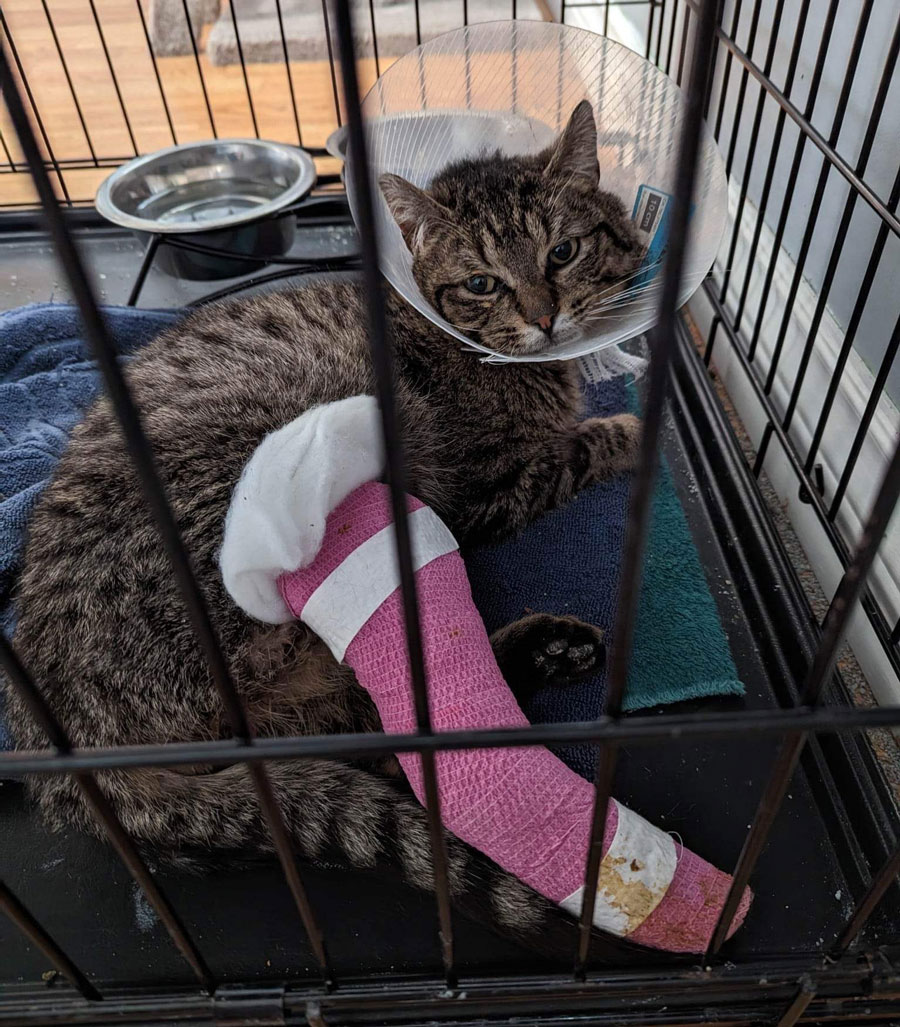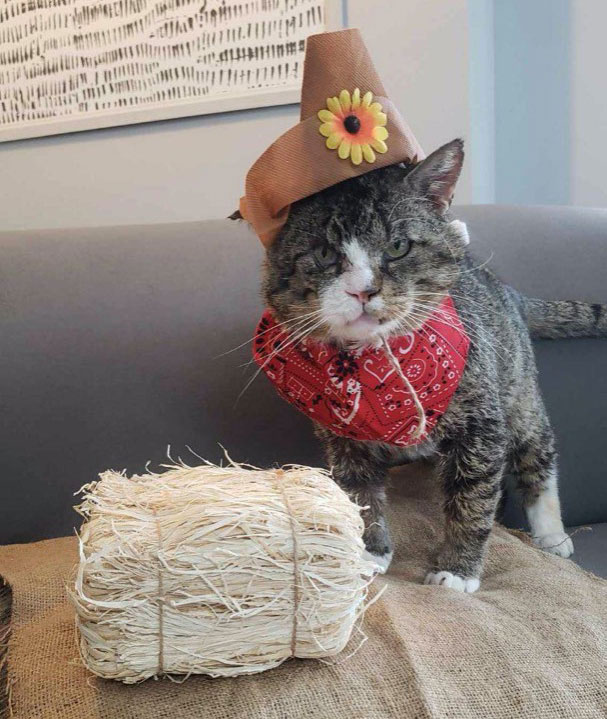WELLINGTON COUNTY – Arthur Animal Rescue Cooperative (AARC) has rescued more than 1,200 cats since launching in 2015 – plus a horse, a beaver, a dog, and a few rabbits and squirrels.
The volunteer-run organization provides stray, feral and surrendered cats veterinary care and finds them a safe place to land.
“We serve the entire Wellington County area, and will never leave a cat to suffer,” said volunteer Kirsten Henley.
The volunteers “have such beautiful hearts,” said fundraising coordinator Michelle Dickson in an interview with the Advertiser and five other AARC volunteers.
Though their focus is cats, a few other animals have slipped in because when the volunteers see an animal that needs help, “we feel a sense of obligation to support the animal,” Dickson said.
Recently, AARC has rescued several cats in need of significant emergency veterinary care, leading to “very large medical costs,” she noted.
These cats include Petey, Merlin, Porter, Goliath and Pookie, and their combined medical costs reached $7,353.
Last year, a few of the kittens AARC rescued struggled with serious health issues like distemper and respiratory infections.
“One kitten had a severe heart murmur,” said intake coordinator Nicole Vettor.
Toronto Cat Rescue covered the cost of the kitten’s life saving surgery at the Ontario Veterinary College (OVC) in Guelph.
Funding
AARC’s funding comes from fundraising initiatives, adoption fees, many individual donations and a few corporate sponsors.
Fundraising includes three or four AARC online auctions every year.
This month, AARC will be at the Guelph Multicultural Festival from June 9 to 11 and at the Arthur Cash and Carry Summer Vibes market on June 24.
There will also be an AARC garage sale in Guelph on June 17 and kitten yoga in Elora on June 25.
Dickson said the majority of funding is donated by community members, but the group is “trying to look to bigger organizations to support the rescue, like the town, where we can hopefully get larger amounts of money coming in to cover these medical costs.”
Stray cats
When an adult stray arrives at the rescue the first step is to try to reconnect the animal with its owners, said Vettor.
The cats are scanned for microchips and posted online in places like lost and found Facebook groups. Volunteers spend five days trying to connect the cat with owners. If none are found, they “proceed with vetting and adoption,” Vettor said.
Vetting includes vaccinations, flea and worm medication, a microchip and spaying or neutering.
There are currently 10 cats and one dog listed as adoptable on the AARC website.
In 2022, AARC placed over 200 cats in adoptive homes, and more than 100 cats have been adopted this year.
Feral cats
Feral cats are different from stray cats because they are “suited to outdoor life” and enjoy it, said AARC finance coordinator Sandra Schaefer. They are often part of large colonies of cats and find shelter and food in barns.
They’re also “not so friendly sometimes,” she added.
Instead of finding foster and adoption homes for these cats, AARC neuter and release to control overpopulation.
Cats “can have two litters a year, with six kittens per litter,” said Henley. And “each of those can reproduce at six months, and have 12 kittens a year. And on. And on,” she added.
Henley is AARC’s social media coordinator and the volunteer responsible for the trap-neuter-release program.
This overbreeding can lead to issues like increased disease, illness, and genetic mutations, especially when young cats reproduce.
Other animals
Dickson said the dog in AARC’s care, Dallas, is a “happy mistake.” After being hit by a car Dallas was going to be euthanized, so AARC volunteers “reached out to lots of rescues, and everyone was full,” she said.
That’s when Heather and Kirsten Henley (mother and daughter) offered to foster him.
A two-year-old blue heeler who wears a diaper inside because he lost control of his bowels when his tail was amputated after the accident, Dallas is currently available for adoption.
Lots of information about Dallas is available at https://www.arthuranimalrescue.com/adoptables.

Survivor – Porter survived being hit by a car in April. Now, he’s looking for a foster family to take him in. “He was in shock and very dehydrated,” when Arthur Animal Rescue Cooperative picked him up, volunteer Heather Henley said, and he needed to be casted immediately to allow his injuries to heal. His vet bill has totalled $1,245 so far.
Fostering
AARC depends entirely on foster homes as the rescue has no physical location. There are currently 115 cats in foster homes and 65 active foster families.
“The need for foster homes is never ending,” Henley said. “If we have space we will take a cat. This means we can only help as many cats as we have foster homes for.”
‘Very rewarding’
Dickson said fostering cats is very rewarding.
It’s valuable to be a “safe landing place for these animals – some of them have never known that,” and you can feel their appreciation to have a warm place to eat and be cared for, she said.
Henley said foster families often say, “I didn’t have to change anything about my lifestyle, they just fit right in.” She noted AARC has cats suitable for homes with kids, as well as dogs, and other cats – “we will find you the right foster.”
Taking care of cats is “so easy,” she added. “It’s not a huge commitment to foster, – just another scoop in the bowl.”
AARC is always looking for new volunteers, and can accommodate any commitment level and availability.
The rescue also accepts donations of cat litter and wet and dry food.
“We are very fortunate that a lot of our fosters cover the cost of those items,” Dickson said, but when they are donated they can be distributed to foster homes, helping to take the “burden of financial costs off fosters.”
More information including how to donate, foster, or adopt and details about the adoptable cats, is available at arthuranimalrescue.com and the group’s social media pages.




